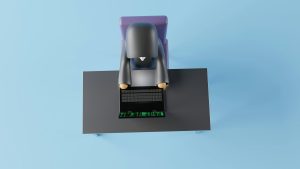Mixed Reality Classrooms: Where Digital Twins Teach Physics Concepts
In recent years, technology has revolutionized the way we live, work, and learn. One of the most exciting advancements in education is the use of mixed reality classrooms, where digital twins are used to teach complex physics concepts. This cutting-edge technology opens up a world of possibilities for teachers and students, providing a hands-on and immersive learning experience. In this article, we will explore the phenomenon of mixed reality classrooms and how digital twins are transforming the learning of physics concepts.
The Rise of Mixed Reality Classrooms
Mixed reality classrooms are a new and innovative approach to teaching that combines the real world with virtual elements. It allows students to interact with digital objects in a physical space, creating a truly immersive learning experience. With the help of advanced technologies such as virtual and augmented reality, teachers can bring complex concepts to life and engage their students in a whole new way.
Breaking Barriers in Physics Education
The field of physics has always been challenging for both teachers and students. Concepts such as quantum mechanics and relativity are abstract and difficult to grasp without visual aids. However, with mixed reality classrooms, teachers can create digital twins of complex physical systems and allow students to explore and manipulate them in real-time. This hands-on learning approach bridges the gap between theory and practice, making it easier for students to understand and retain the concepts.
Bringing Digital Twins into the Classroom
Digital twins are virtual replicas of physical objects, processes, or systems. In a mixed reality classroom, these digital twins are used to represent concepts in physics. For example, students can interact with a digital twin of the solar system, allowing them to see planetary motion and understand gravitational forces. They can also experiment with a digital twin of an atomic structure, observing how electrons move and interact with each other.
The Benefits of Mixed Reality Classrooms
Enhanced Learning Experience
The immersive nature of mixed reality classrooms offers a dynamic learning experience for students. They can explore complex physics concepts in a more interactive and engaging way. By interacting with digital twins, students can experiment, make observations, and draw conclusions, making the learning process more meaningful and effective.
Increased Collaboration and Creativity
Mixed reality classrooms foster collaboration among students as they work together to solve problems and complete tasks. This encourages a sense of teamwork and helps develop critical thinking and problem-solving skills. Moreover, students can be creative in their approach to learning, making use of the endless possibilities that come with a mixed reality environment.
Accessibility and Cost-effectiveness
Mixed reality classrooms provide access to expensive equipment and simulations at a relatively low cost. Students can experience the latest technology and equipment without the need for expensive lab equipment and setups. This makes physics education more accessible to students from all backgrounds.
The Future is Here
The use of mixed reality classrooms and digital twins is not limited to physics education. This technology has the potential to transform education in various fields such as biology, chemistry, and engineering. As it becomes more affordable and accessible, we can expect to see its adoption grow in schools and universities across the world.
The Role of Teachers
Technology can only enhance the learning experience when utilized effectively. Teachers play a crucial role in incorporating mixed reality classrooms into their teaching methodologies. They need to understand the technology and its applications to create a meaningful and engaging learning experience for their students.
In Conclusion
Mixed reality classrooms and digital twins have the power to take physics education to the next level. It allows for a more interactive, hands-on, and immersive learning experience, breaking the barriers that once hindered students from understanding complex concepts. As technology continues to evolve, mixed reality classrooms are just the beginning of the revolution in education, and we can only imagine the endless possibilities it holds for the future.








